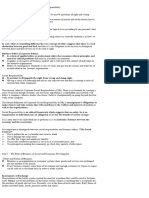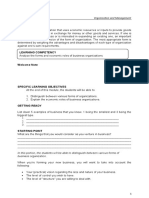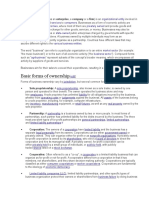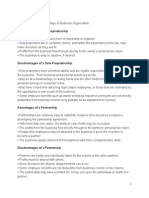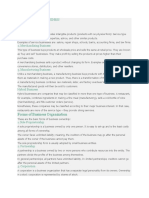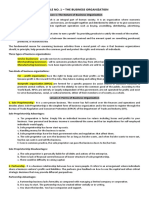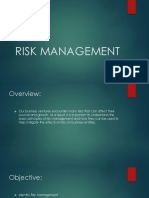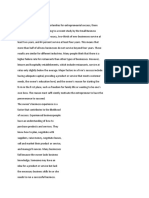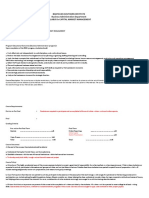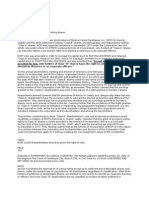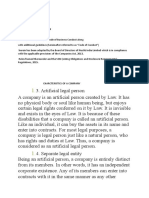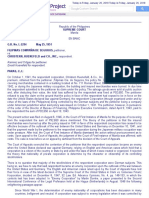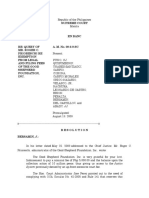0% found this document useful (0 votes)
132 views9 pagesBESR Chapter1
The document discusses different forms of business organizations and their characteristics. It provides examples of sole proprietorships, partnerships, corporations, limited liability companies, and cooperatives. It then explains how businesses contribute to socioeconomic development by employing people, driving innovation, offering choice, enabling entrepreneurship, and serving as the basis for a nation's economy. Finally, it discusses the importance of fairness, accountability, and transparency in businesses and non-profits.
Uploaded by
Ray John DulapCopyright
© © All Rights Reserved
We take content rights seriously. If you suspect this is your content, claim it here.
Available Formats
Download as TXT, PDF, TXT or read online on Scribd
0% found this document useful (0 votes)
132 views9 pagesBESR Chapter1
The document discusses different forms of business organizations and their characteristics. It provides examples of sole proprietorships, partnerships, corporations, limited liability companies, and cooperatives. It then explains how businesses contribute to socioeconomic development by employing people, driving innovation, offering choice, enabling entrepreneurship, and serving as the basis for a nation's economy. Finally, it discusses the importance of fairness, accountability, and transparency in businesses and non-profits.
Uploaded by
Ray John DulapCopyright
© © All Rights Reserved
We take content rights seriously. If you suspect this is your content, claim it here.
Available Formats
Download as TXT, PDF, TXT or read online on Scribd
/ 9









